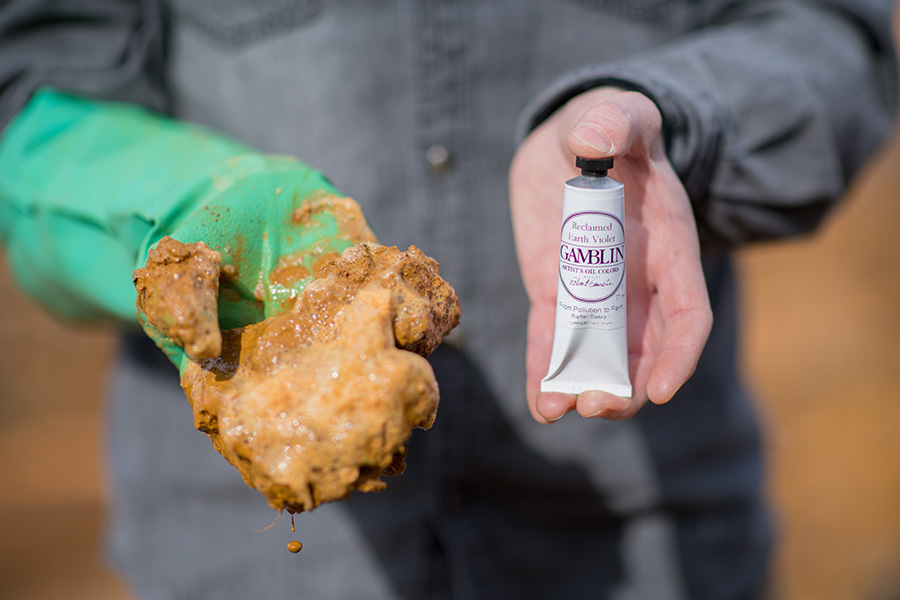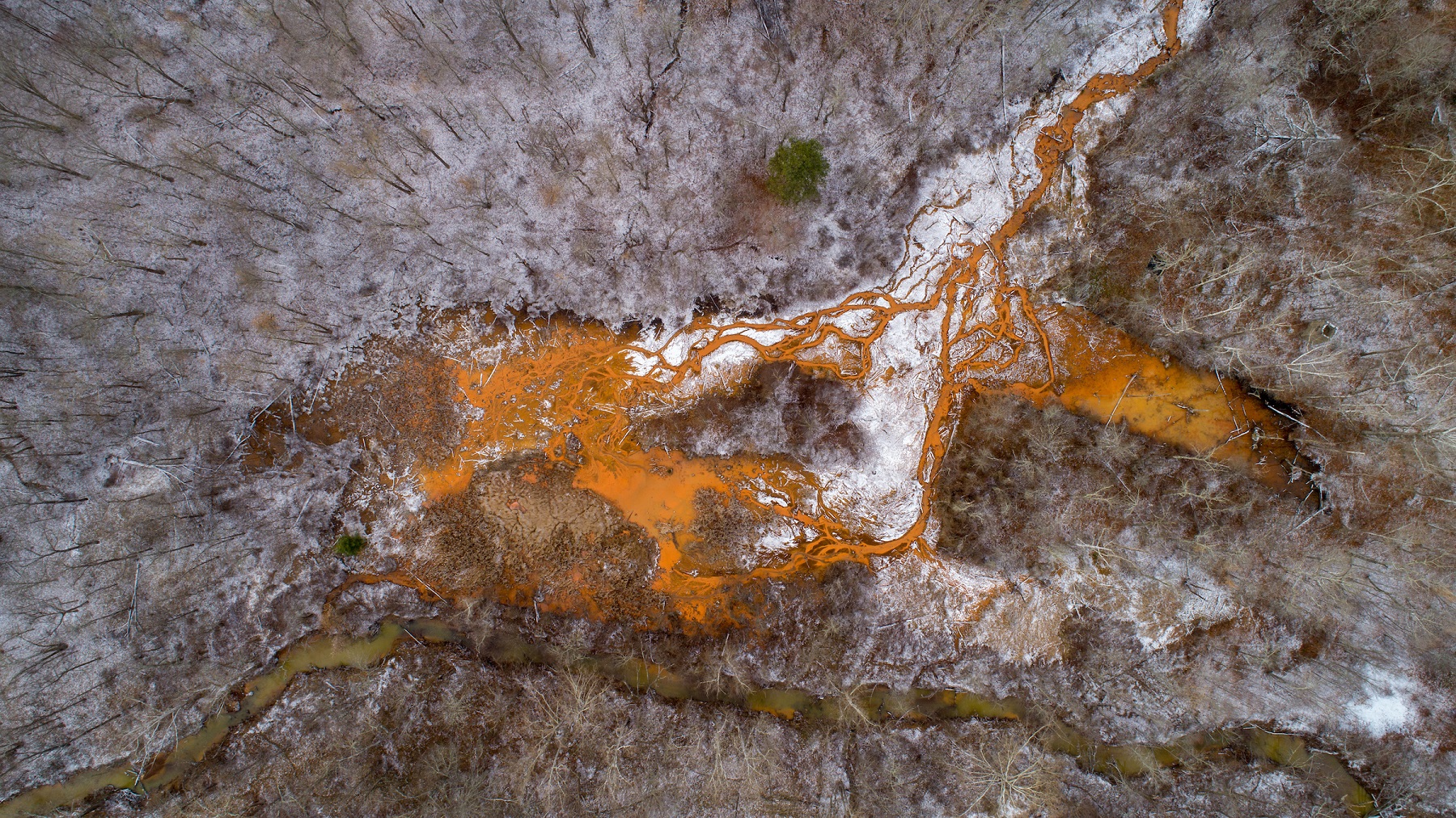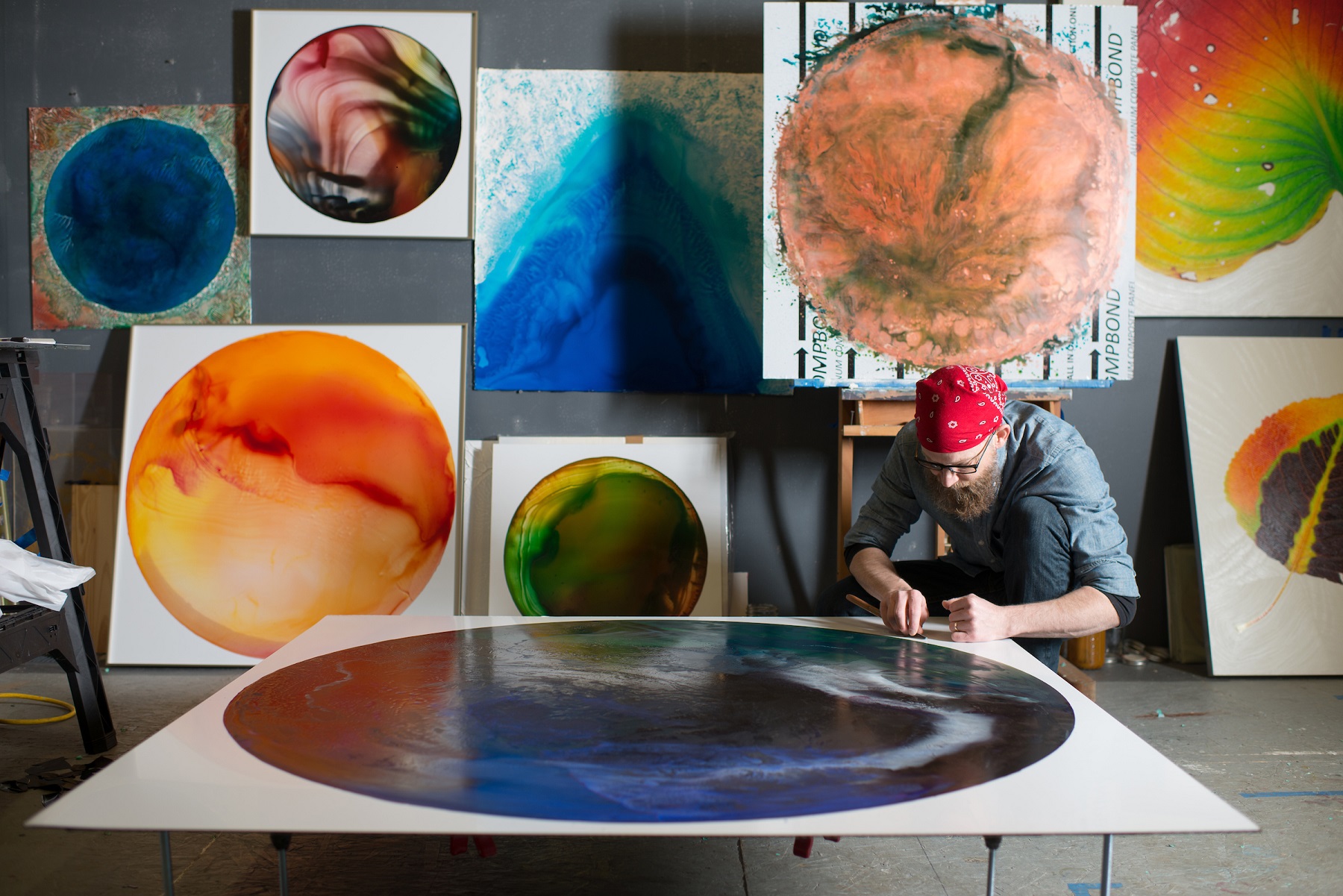Restoring nature’s hues: Ohio University and Rural Action forge path to clean water and artistic vitality in Southeast Ohio
Ohio University and Rural Action are restoring clean water to Southeast Ohio and bringing fresh color to artists everywhere.
June 29, 2023
Share:

Reclaimed Earth Violet paint by Gamblin Artist's Oil Colors. is manufactured using acid mine drainage through a process developed by Ohio University Civil Engineering Chair/Professor Guy Riefler.
Ohio University and Rural Action are restoring clean water to Southeast Ohio and bringing fresh color to artists everywhere. A large-scale acid mine drainage treatment and pigment-producing facility broke ground on June 29 at the Truetown Discharge site, in Millfield, Ohio.
“Ohio University is continuing to demonstrate its commitment to creating clean water in the Southeast Ohio region,” said OHIO Professor Guy Riefler, Russ College of Engineering and Technology’s civil engineering chair. “Acid mine drainage is a serious environmental concern that threatens water purity and aquatic life. The University’s partnership with Rural Action is part of an ongoing effort to restore life to the creek and water quality to the community."
Ohio University’s partnership with Rural Action began to clean up the waterway with the success of a smaller pilot facility, which led to the development of an industrial-scale acid mine drainage treatment and pigment-producing facility. This facility is expected to improve the quality of life for people in Appalachia by restoring clean water to Sunday Creek, reducing the risk of drinking water contamination.
The project also provides experiential learning opportunities for OHIO students and national service members by converting pollution to a domestic source of iron oxide pigment. In turn, this work helps to create a demand for the pigment’s sustainable production. The iron oxide pigment produced from acid mine drainage is a valuable resource to artists, as it can be used to create vibrant and diverse colors for their work.

An acid mine drainage site in Oreton, Ohio. Photo by Ben Siegel.
Because of the unique combination of community involvement, environmental restoration, and entrepreneurship, the Ohio Department of Natural Resources awarded the project $3.5 million in 2019 to begin design and construction of the full-scale acid mine drainage treatment and pigment product facility at Truetown.
True Pigments LLC is a social enterprise launched by Rural Action, driven by the work of OHIO Professors Riefler and John Sabraw, College of Fine Arts' painting and drawing chair. True Pigments uses innovative technology to revitalize streams devastated by historic coal mining, taking a pollutant and turning it into a commodity that will pay for the restoration of streams long impacted by acid mine drainage, creating jobs in rural communities, and funding more watershed restoration projects.
"This new facility is a critical step in restoring clean water to the localities of Southeast Ohio, and in demonstrating how art plays a vital role in creating a vibrant community. We are thankful to have partners like Rural Action and offices at the state and federal levels to help make this project a reality," Sabraw said.
More than 6,650 stream miles in Central Appalachia run orange due to the impact of acid mine drainage. Although most of the mines that caused this drainage have been abandoned, pollution from them is expected to continue for decades.
The Truetown Discharge, located in the Sunday Creek watershed, is the largest single acid mine discharge in the state of Ohio. This means approximately 2.2 million lbs. of iron oxide are dumped into Sunday Creek each year, decimating aquatic habitat for seven miles.

John Sabraw. Photo by Ben Siegel.
In 2017, Ohio University and Rural Action began testing the laboratory process in the field. The team built a research-scale treatment plant in Corning, Ohio, at a large acid mine drainage discharge on Sunday Creek, working with the Corning Village Council. Citizen volunteers and students helped the team clear the site and build the facility’s concrete foundation. Engineering and art students worked together to design and build each step in the treatment system so that it would also serve as a public art exhibit.
By 2019, the research plant validated the conversion process, so the team returned to the original objective from a decade ago — cleaning up and restoring the lower seven miles of Sunday Creek.
The groundbreaking exemplifies the University's commitment to sustainable practices and community engagement. The new facility, which transforms environmental waste into artistic resources, demonstrates an innovative, interdisciplinary approach to solving environmental challenges while enhancing community livelihoods and creative economies. The project also offers students and national service members a unique opportunity for experiential learning, underlining Ohio University's commitment to shaping future generations of environmentally responsible and socially conscious citizens.